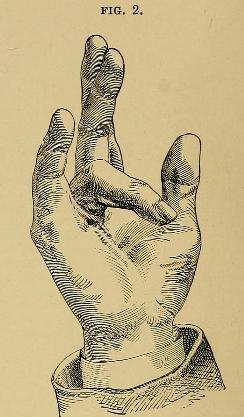Associations of Dupuytren’s Contracture
Mnemonic: DEAFEST LIAR
- Diabetes mellitus
- Epilepsy
- Age (positive correlation)
- Family history (autosomal dominant)/Fibromatoses
- Epileptic medications (phenobarbitone)
- Smoking
- Trauma and heavy manual labour
- Liver disease (Alcoholic)
- Idiopathic (most common)
- AIDS
- Reidel’s thyroidits

Dupuytren’s diathesis
Mnemonic: ABCDEF
Severity and recurrence risk is increased in:
- Age at onset <50 years
- Bilateral palmar lesions
- Country (North European)
- Dude (Male)
- Ectopic lesions (Garrod’s pad, Peyronie’s disease, Ledderhose’s disease)
- Ledderhose disease (plantar fascia): 10-30% association
- Peyronie’s disease (dartos fascia of penis): 2-8% association
- Garrod disease (knuckle pads): 40-50% association
- Family history
If all 6 diathesis risk factors are present: risk of recurrence is 71%
If none of diathesis risk factors are present: risk of recurrence is 23%
Involvement of fingers
Mnemonic: RaSMIT
In order of decreasing frequency:
- Ring
- Small
- Middle
- Index
- Thumb
30-20-10 rule for Surgery in Dupuytren’s contracture
Surgery should be considered when:
- MCP joint contracture >30 degrees
- PIP joint contracture >20 degrees
Recurrence following surgery is <10% at 10 years